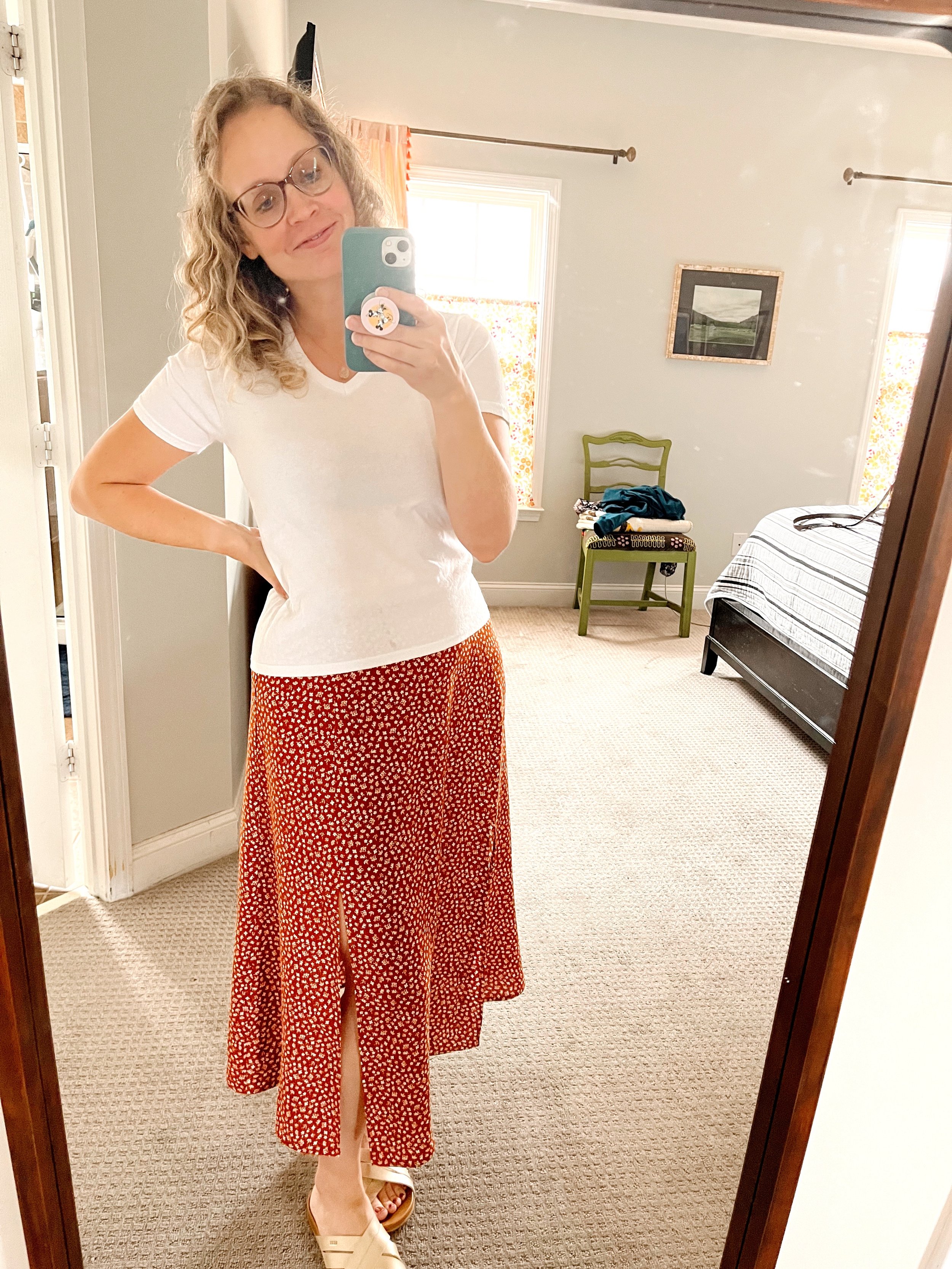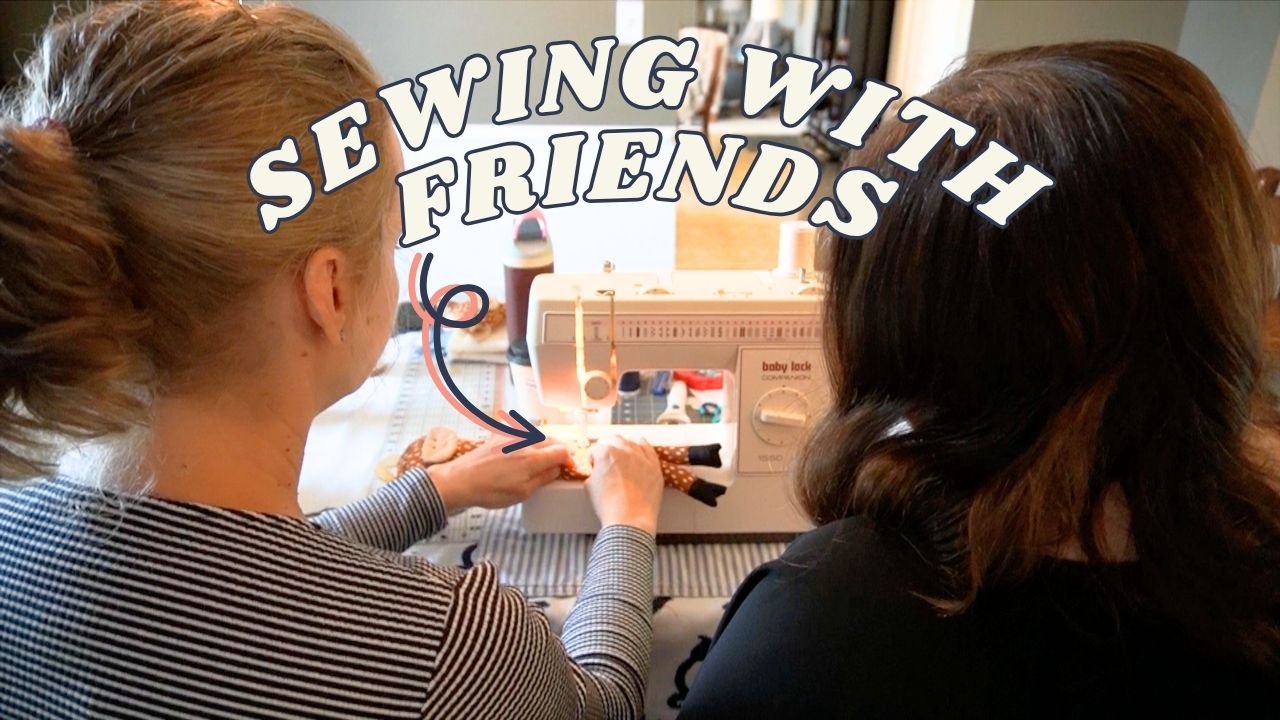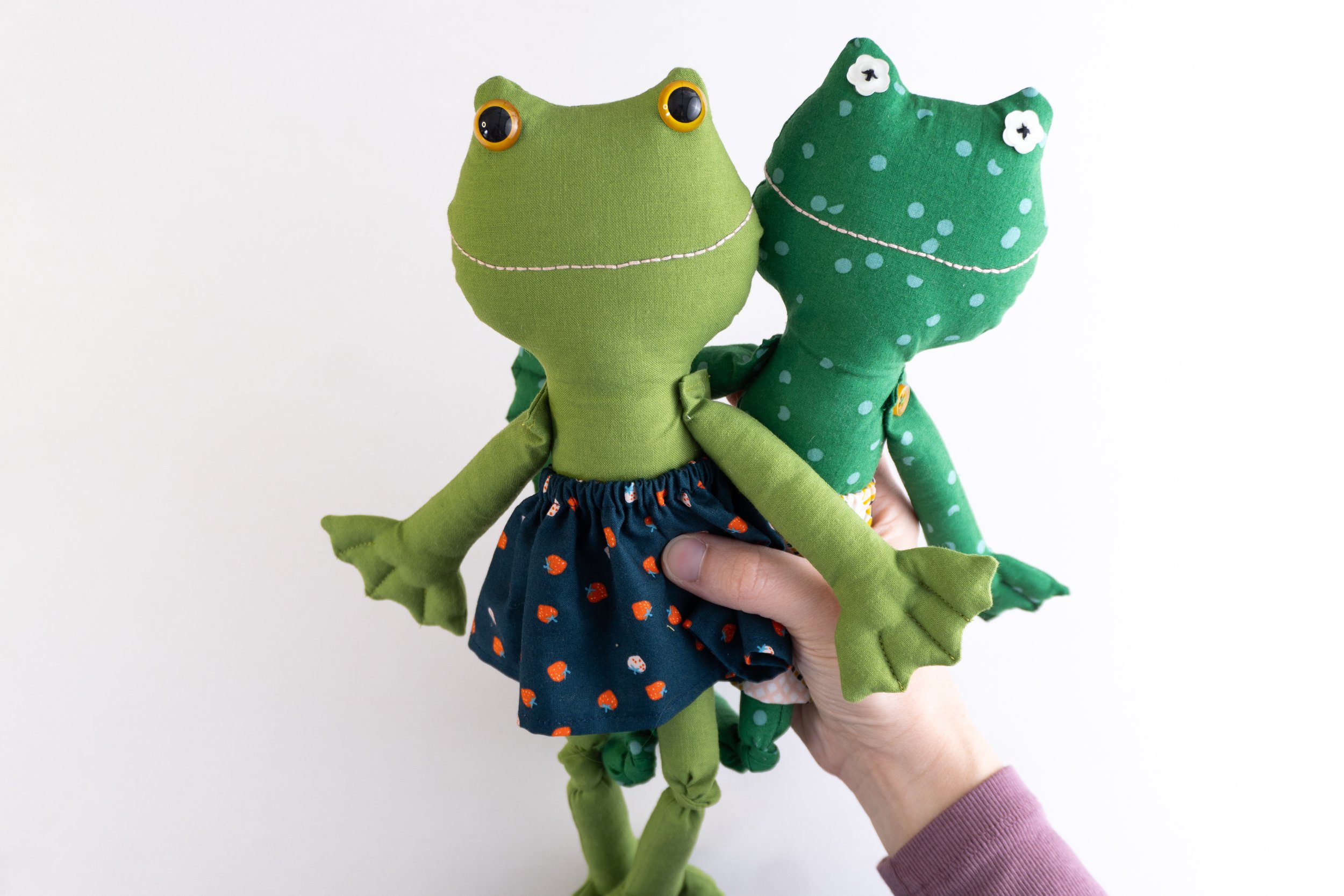How to Sew a T-Shirt from Scratch || A Beginner's Guide
It’s funny that t-shirts are considered one of the most basic garments out there, but most people are afraid to try sewing one! I’m here to fix that for you today. T-shirt sewing doesn’t have to be scary or complicated. With a few specific tools and tricks, you can copy a well fitting t-shirt and make them up in all kinds of fabrics and colors!
This post may contain affiliate links, which means that while I am not paid to promote certain items, I will earn a small commission should you purchase items through these links. For more info, see my disclosure policy.
I ordered a three pack of mens Hanes t-shirts on Amazon recently because I wanted to crop them to wear with my high waisted Summer skirts I’ve been making. I like the fit of these shirts, but they don’t come in very many colors — unsurprisingly for mens’ undershirts, I guess, haha.
So I went ahead and hemmed two of the shirts to the length I wanted, then cut the third one up to use as a pattern to recreate the same shirt in a nice gray knit fabric I had. I wanted a gray version to wear with more skirts and it worked out perfectly.
I knew right away this was a technique I wanted to share with you, so I was sure to record the entire process for my YouTube channel! Watch that video here or below.
How to Make a Basic T-Shirt from Scratch
I can sew a t-shirt in under an hour (and that included the time it took to film the process to teach it!) Sewing knits is really easy if you know a few tricks to make it work for you.
Tips for Sewing Stretch Knit Fabrics:
Use the Right Stitch
First, you need to use a sewing technique that ensures your stitches won’t pop when you stretch the fabric onto your body. I use a serger for mine, but I sewed for years without one, so don’t think you can’t sew knits without one! Some machines have an overlock stitch, but almost all machines have a stretch stitch that looks like a lightning bolt and is specifically for sewing knit fabrics. The stitch allows the fabric to retain its stretch when pulled.
Another non-serger method is to simply sew “double stitched seams”. This means, sew your normal straight stitch, then sew again 1/8” inside of the first stitching. Then trim. This is how I sewed knits for years before I had a serger. It’s the simplest way and I never had any issues at all.
Use the Right Sewing Machine Needle
When I was new at sewing with knits many years ago, I kept experiencing skipped stitches. I had a cheap machine back then, so I chalked it up to the machine, until I read that I should be using ball point needles to sew on knit fabrics! The needle is key, it solved all my issues.
If you’re using a slinkier knit, you can also try attaching a walking foot to your machine. This will help feed the fabric through without stretching it out of proportion.
About the Neckband …
I have a magic formula for knit neckbands! I have found that patterns for knit garments often include a neckband pattern piece that is just too big. If you’re getting a neckband finish that gapes and doesn’t lay flat, refer to my blog post about sewing a perfect knit neckband every time, and watch the above video to see it in action.
The Best Fabrics for DIY T-Shirts
This is really a personal preference issue, which is why it can be hard to order t-shirt fabrics online. I know firsthand the we can all be very picky about our t-shirts and how they feel! My husband is the pickiest t-shirt person I know, haha.
While the Hanes shirts I bought are 100% cotton and I like those, the gray fabric I used for my copycat version has cotton, rayon and some spandex. There are some all cotton jerseys that have terrible recovery and get super stretched out when you sew and wear them (I’m lookin’ at you, JoAnn Doodles collection), and I’d avoid those.
Cottons, rayons, bamboo jerseys, those are the fabrics I’d look for if shopping online. BUT, I also have had success making tees for myself out of my husband’s castoff shirts! So if you go to the thrift store and look in the larger mens sections for very nice t-shirts, you can find some very nice fabrics that way. Otherwise, it’s good to just keep your eyes open at the fabric store and the remnant bins, for fabrics that would make great tees. My gray fabric was less than a yard and I still got a shirt out of it, so you don’t even need very much.
That’s all I have for now, but I plan to post a round up of great t-shirt patterns for you tomorrow! I’ve made a ton of knit tops and definitely have some tried and true options to tell you about. So if making your own t-shirt by cutting up another one isn’t an option for you, come back for that. (EDIT: Here is it! My 4 favorite patterns for t-shirt sewing).
Cheers!
Nikki














